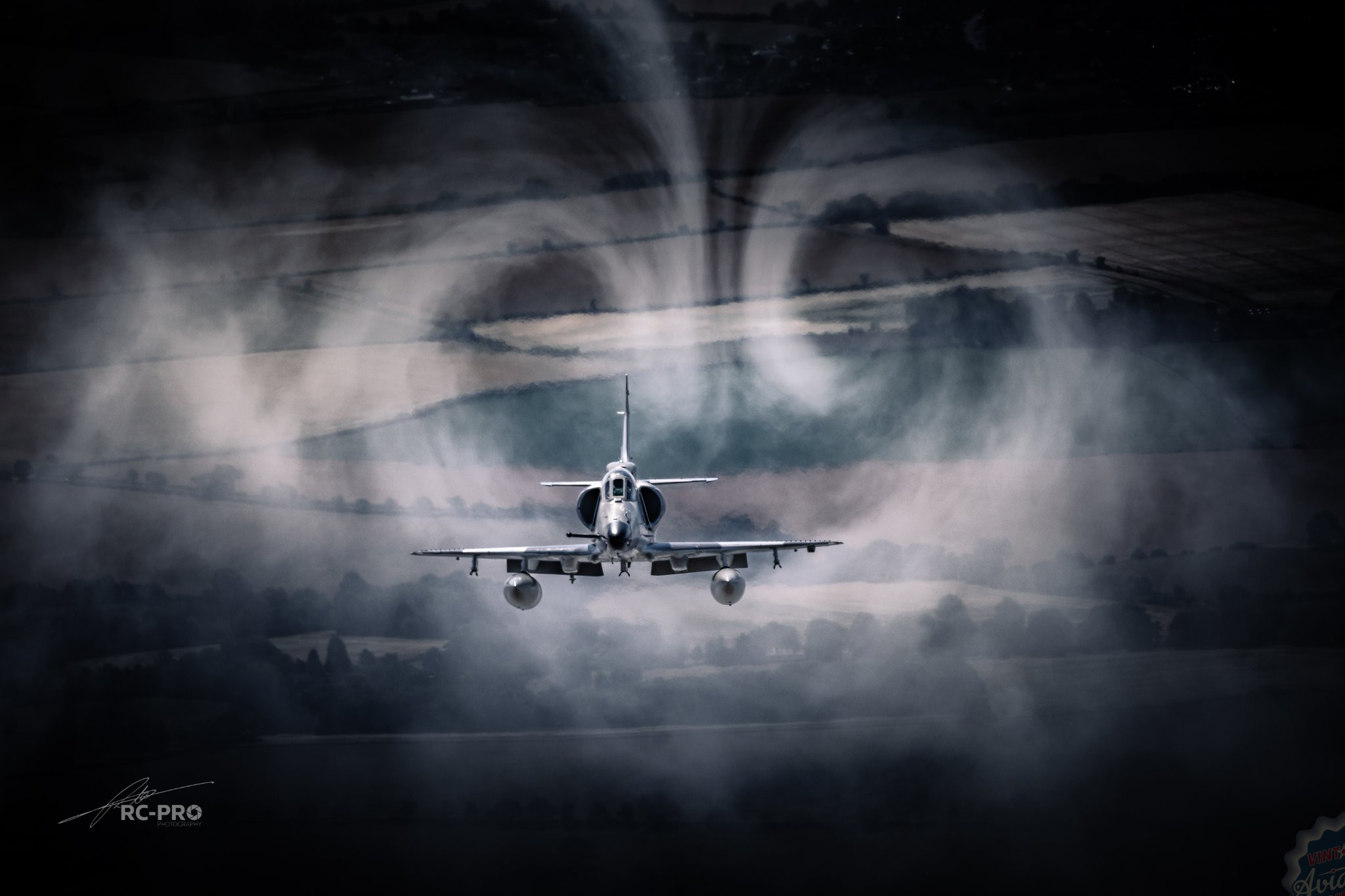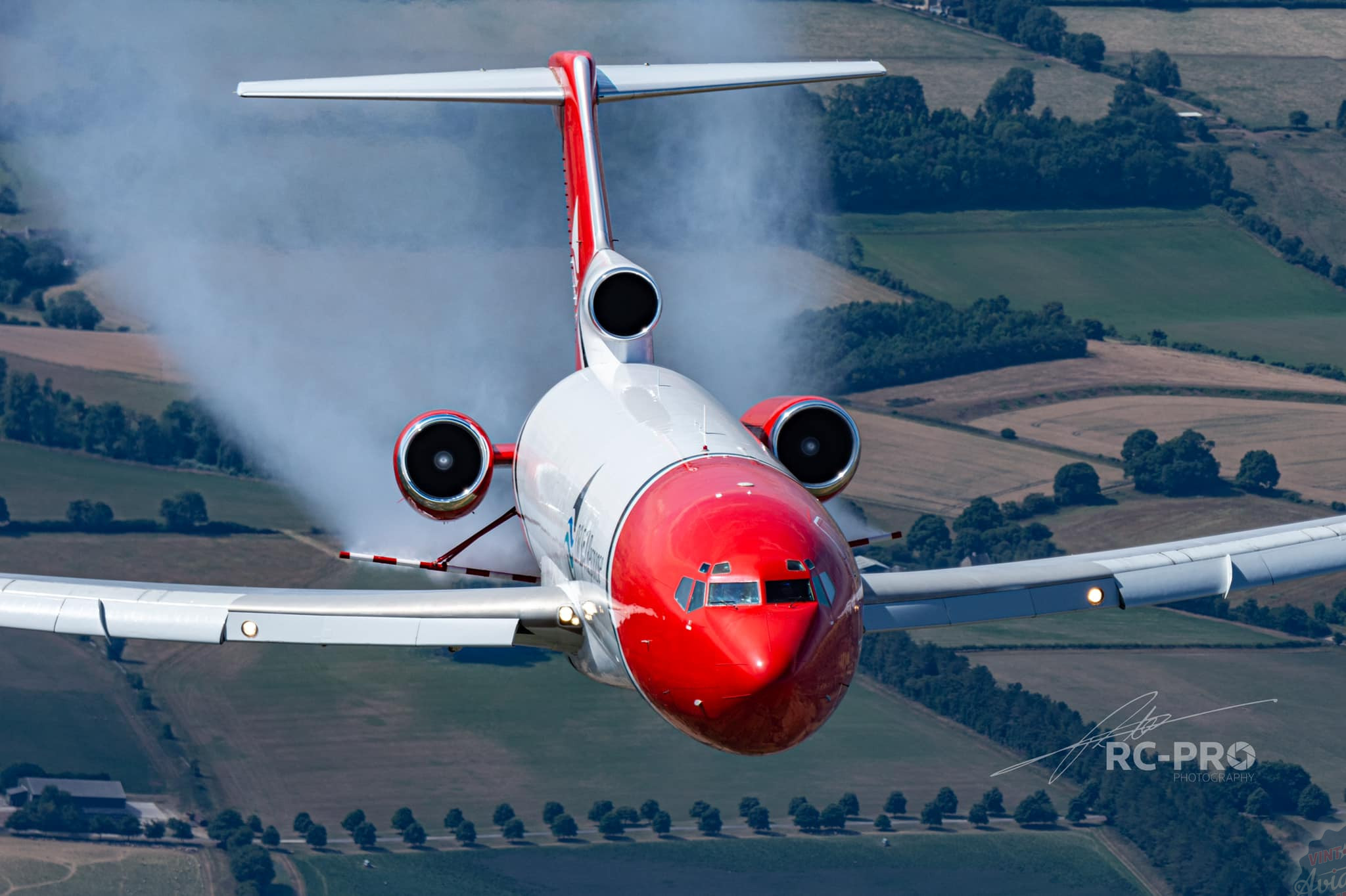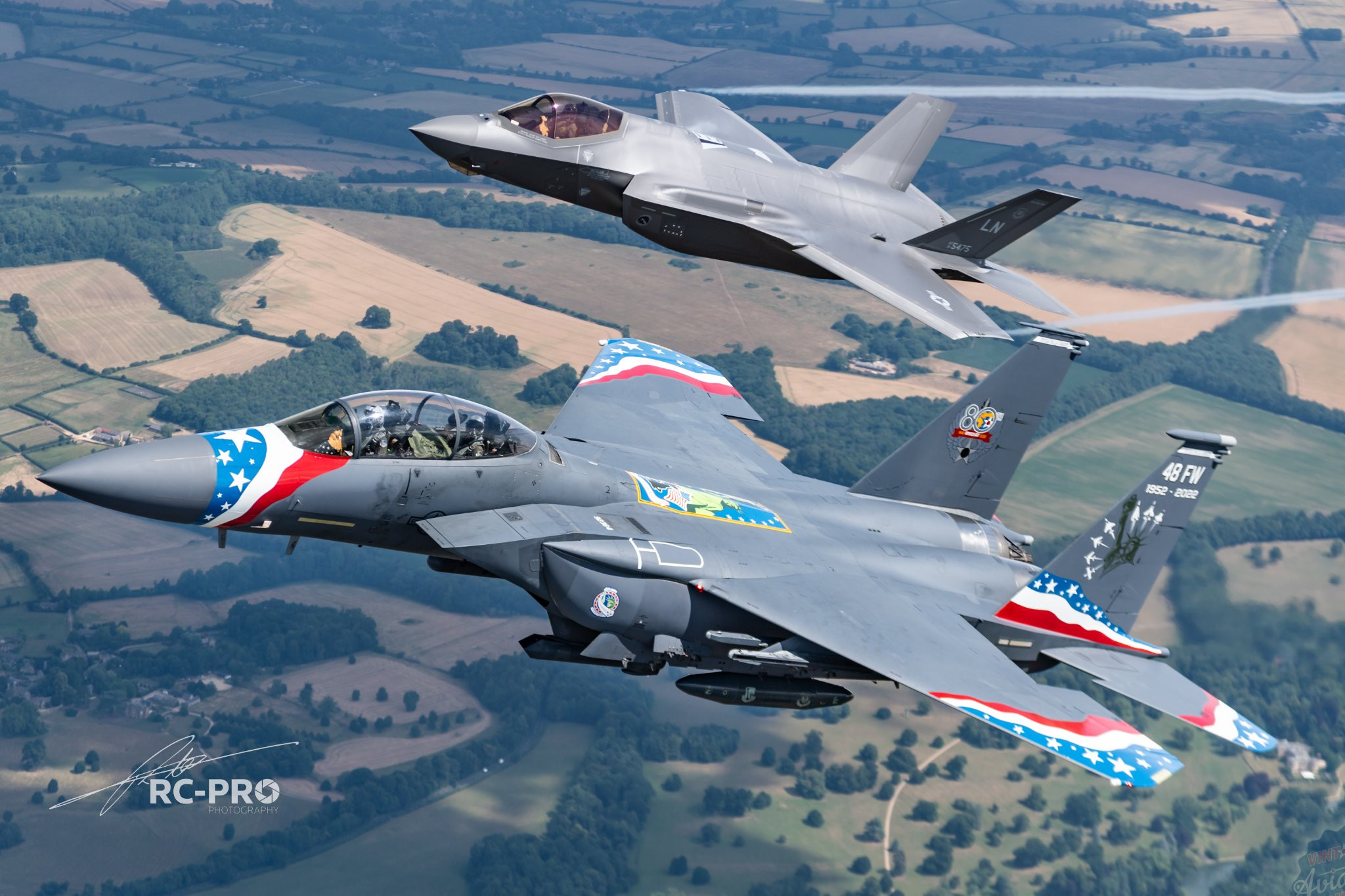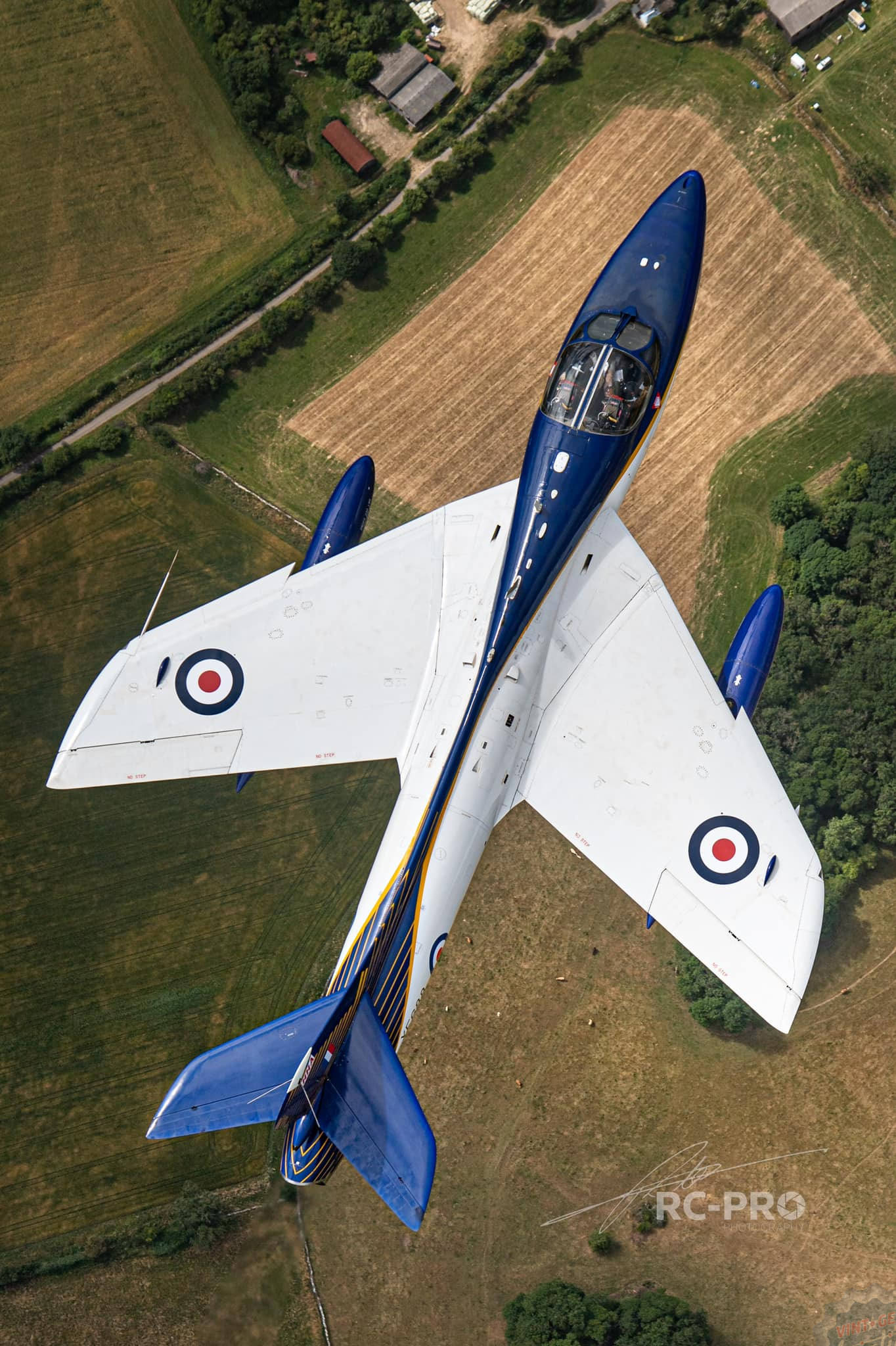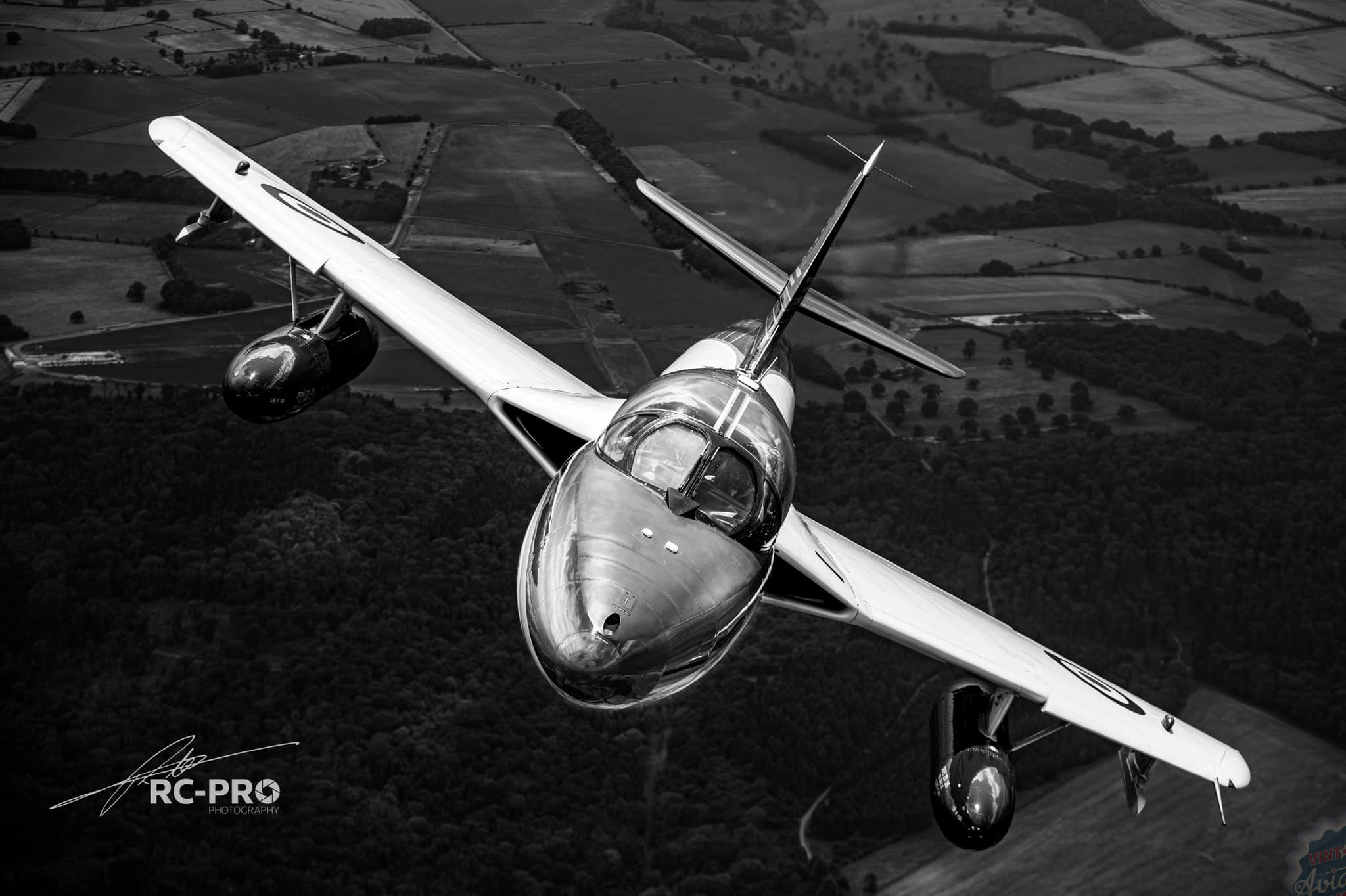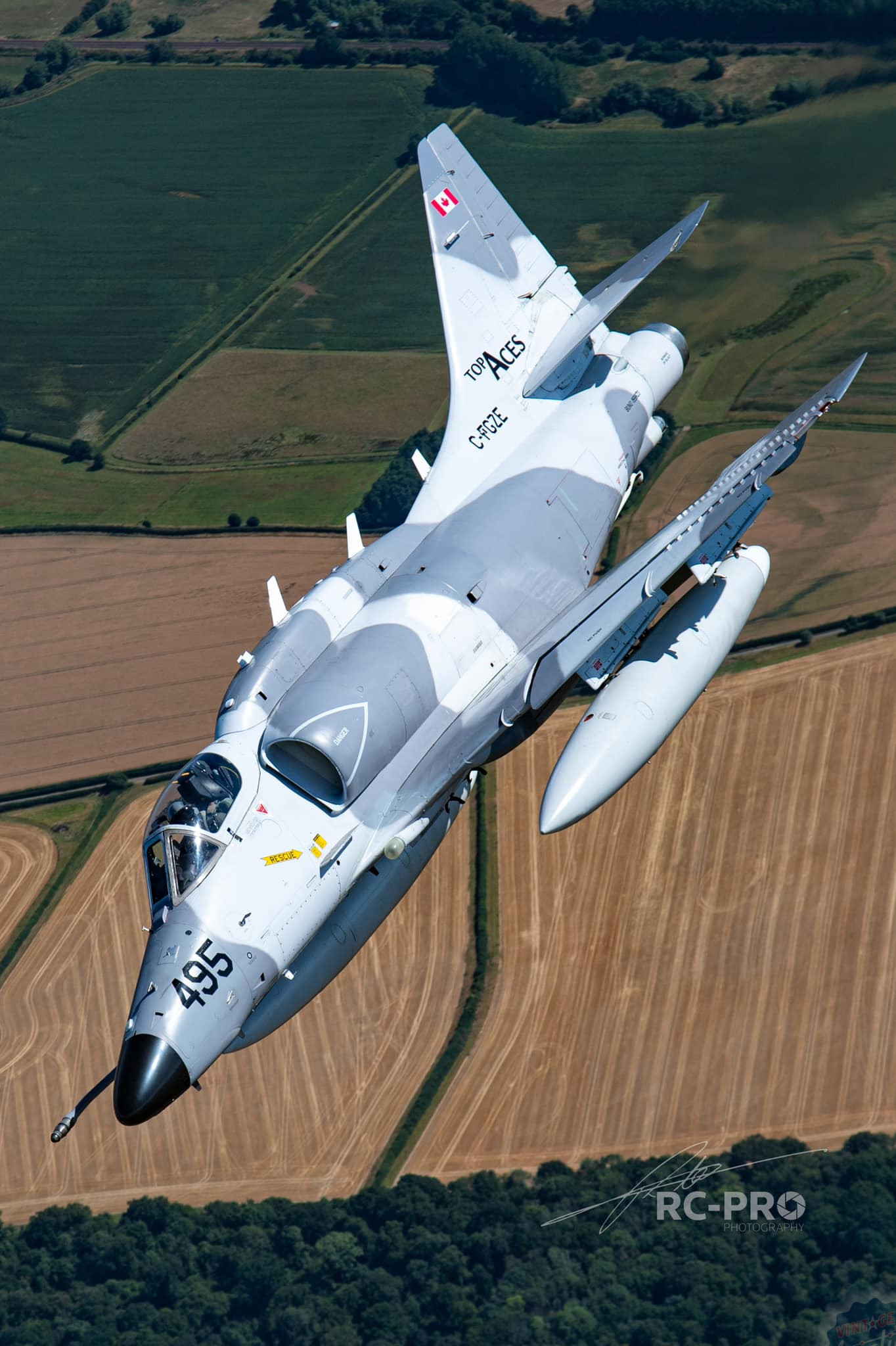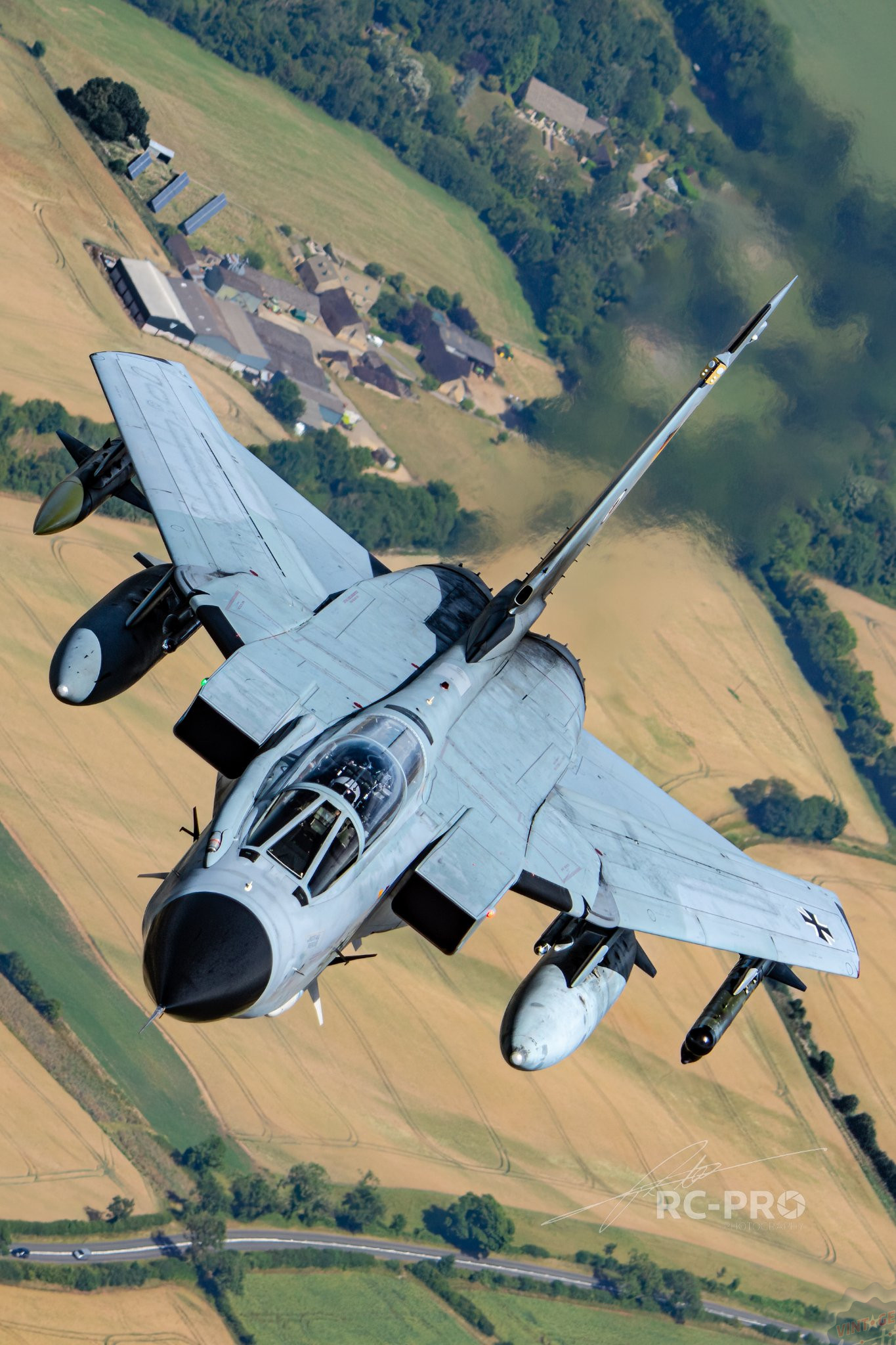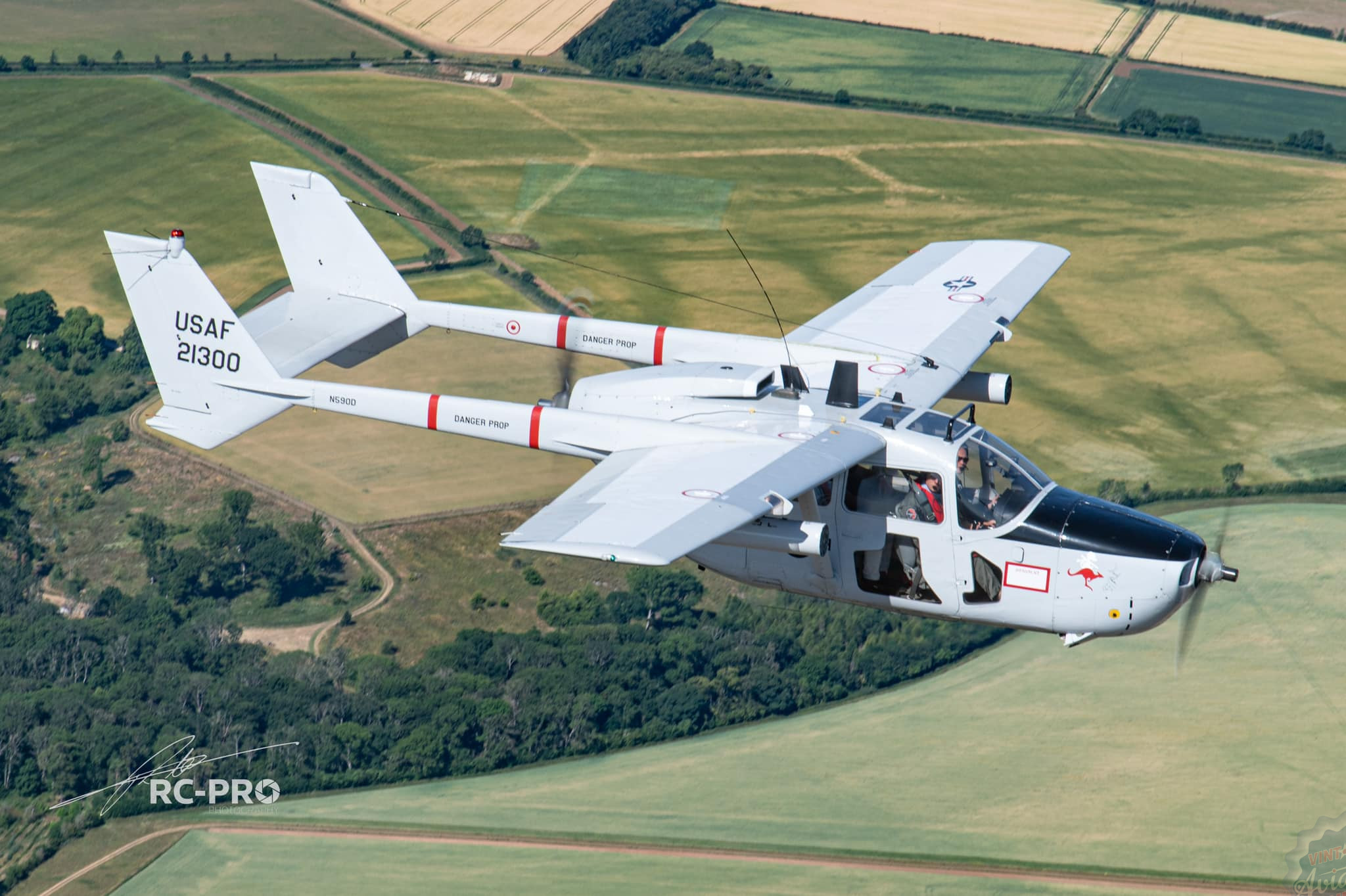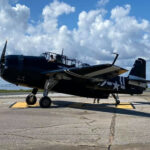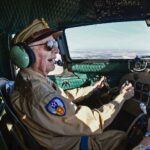The Royal International Air Tattoo (RIAT), held this year at RAF Fairford in Gloucestershire, Britain, is easily one of the world’s most anticipated air shows, drawing well over 170,000 visitors for 2022 alone. It’s easy to see why, given the multitude and diversity of participating aircraft which came in from all over the globe. In addition to the plentiful examples of contemporary military and civilian types, there are numerous oddities which regularly make an appearance too. Whether these are vintage types almost lost from today’s skies, or present-day examples wearing one-off liveries, there is always something on hand which is bound to take your breath away, and this year was no exception. We are very fortunate to have some of the spectacular images which our good friend Richard Cooper managed to capture during one of the Center of Aviation Photography (COAP) photo-flights which he lead in partnership with the Aviation Photocrew from the back of Phillip Artweger’s Short SC.7 Skyvan.
A vintage Boeing 727 freighter converted into a spray aircraft by 2Excel Aviation made for a fascinating appearance, especially given the types rarity today. RIAT described the aircraft and its role, noting: “Completing our trio of static aircraft from 2Excel Aviation this year is one of their pair of Boeing 727-2S2F (RE) which they operate on behalf of Oil Spill Response Limited. Whilst more famous for its original role as an airliner, this variant of the 727 was originally produced as a cargo freighter. Previously operated by FedEx to deliver freight, this 727 has been heavily modified for use in combating oil spills throughout the world. These aircraft have the ability to spray dispersant in all weather conditions, including icy weather, through the use of the TERSUS oil dispersant system, which was designed, manufactured, installed and certified by 2Excel. Following a recent upgrade, these pair of UK-based 727s will continue to be the go-to response platform for the most serious (Tier 3) oil spill incidents until at least 2028.” It made for a spectacular site when distributing simulated oil dispersant from its rear-mounted spray-bars as captured magnificently by Richard Cooper from his perch aboard the AirCrew’s pink-painted Short Skyvan.
With 2022 marking the U.S. Air Force’s 75th anniversary as an independent air arm, there was bound to be a specially painted aircraft to help celebrate this milestone. This came in the form of an F-15E Strike Eagle from the 492nd FS, 48th FW based at RAF Lakenheath. The aircraft’s special livery specifically celebrates the 48th FW’s 70th anniversary, the USAF’s 75th anniversary, and USAF Europe’s 80th anniversary.
This Strike Eagle made it’s official debut at RIAT, but the USAF published a nice video which shows off the airframe’s livery in greater detail below…
Of particular interest to many was the magnificent Hawker Hunter T.Mk.72 supplied by Hawker Hunter Aviation Ltd. from their base at RAF Scampton.
Another favorite on hand for regular readers will be one of Top Aces’ McDonnell-Douglas A-4N Skyhawks which perform adversarial training roles under contract with various military air arms around the globe. The aircraft, presently listed as C-FGZE on Canada’s civil registry once served in the Israeli Defense Force. It flew in from Nordholz, Germany on Friday, July 15th, which is when Richard Cooper captured her in the air.
A real rarity in European skies now, the Panavia Tornado also made an appearance at RIAT, with a pair of Luftwaffe examples taking part in the show. These airframes came from Taktisches Luftwaffengeschwader 51 (AKG 51 “Immelmann”), a tactical reconnaissance unit based at Schleswig Air Base in Germany. The Tornado has been a NATO workhorse for many years, but its days in Europe are numbered, as both the Luftwaffe and Italy’s Aeronautica Militare are scheduled to retire the type sometime in 2025.
And finally, a Cessna O-2A Skymaster marked as a U.S. Air Force Forward Air Controller variant in Vietnam War-era markings also made an appearance. This beautiful aeroplane even bore a small kangaroo motif on its nose, a testament to the Australian aircrews who flew in U.S. units on exchange during periods of the conflict.
Vintage Aviation News wishes to thank Rich Cooper very much for the use of his marvelous air-to-air images from RIAT. For those interested in participating in one of his extraordinary, hands-on photography workshops, please do visit the COAP website to see what the next assignments may present… there are typically many unique opportunities for catching rare breeds in the skies all over the world.







